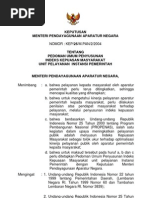Zakoni Elektrodinamiki I Princip Otnositeljnosti Prezentaciya

The previous chapters have established the following main conclusions: First, the physical evidence associated with the anthrax spores in the attack letters did not reveal the source of the materials in the letters. Second, genetic analyses of the spores established that the anthrax belonged to a particular subtype known as the Ames strain. Third, while no genetic differences were observed between the predominant Bacillus anthracis genotype in the letters and the canonical Ames strain, FBI contractors discovered several subpopulations of B. Anthracis cells in the letters that each produced distinct colony morphologies after growth on agar plates, and some of these subpopulations possessed specific genetic mutations that could be identified by specific sequence-based assays developed by the FBI and its contractors. In this chapter, we describe the establishment of the FBI Repository (FBIR) of Ames strain samples, created by the FBI to look for the B. Anthracis subpopulations found in the letters with the hope of being able to identify the source of the B.
Anthracis spores used in the attacks. Free nevada drivers license template. The chapter also outlines the history of RMR-1029, the spore-containing flask at the U.S. Army Medical Research Institute for Infectious Diseases (USAMRIID) that became a focus of the FBI investigation, at least in part because it contained all of the subpopulation genotypes that were assayed. The results obtained from screening the repository samples are described, including the evidence that appeared to implicate RMR-1029 as the source of the spores in the attack letters. Particular attention is given to the limitations of applying formal statistical methods to these results and of trying to quantify the strength of the relationship between the spores in the attack letters and those in RMR-1029. The committee then discusses evidence bearing on a disputed sample submitted by the suspect in this case as well as follow-up experiments performed by the FBI to determine whether that sample had come from its stated source, RMR-1029 (see Amerithrax Investigative Summary. USDOJ, 2010, pp.
75-79, for a description of the circumstances surrounding the disputed sample). The chapter ends with the committee’s major findings regarding the genetic evidence relevant to the source of the B. Anthracis spores used in the letter attacks.
Review of the Scientific Approaches Used During the FBI's Investigation of the Anthrax Letters evaluates the scientific foundation for the techniques used by the FBI to determine whether these techniques met appropriate standards for scientific reliability and for use in forensic validation, and whether the FBI reached appropriate scientific.
